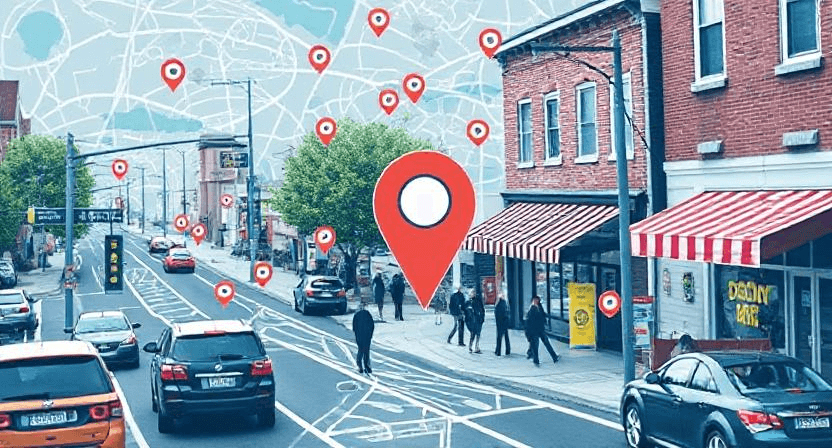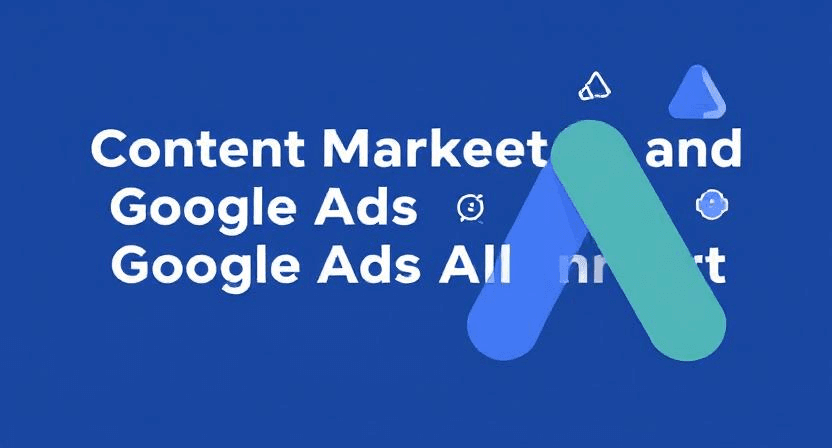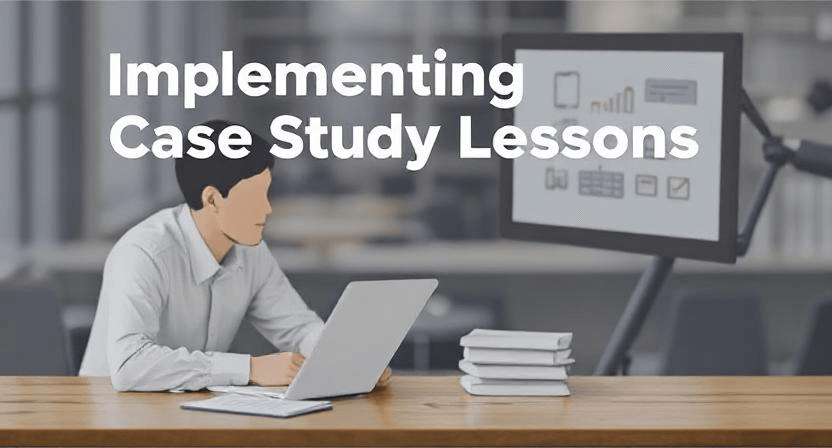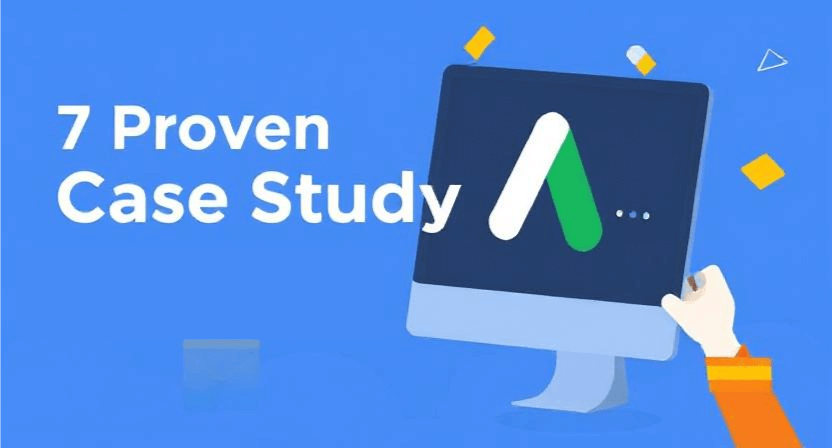Table of Contents

Introduction: The Power of Real-World Examples
Digital marketing strategies are as crowded as theoretical opinions in the maze; thankfully {google ads case study} examples show the way. These aren’t just anecdotes; they are thoroughly documented stories of actual campaigns in the Google Ads realm — the highs and the lows of true businesses operating in the Google Ads world. Unlike abstract concepts, these case studies give you ideas on something that does work tangibly; actionable items to help you change and revolutionize your own advertising campaigns.
Imagine cooking with a recipe versus watching an experienced cook make the dish. You get the recipe, ingredients, and instructions; but the recipe provides the ingredient list; it’s the chef that shows you those little nuances, the slight temperature changes, or the perfect timing or any intuition about the whole process. A {google ads case study} is watching the real time execution of that chef and understanding the ‘why’ behind each step.
The task at hand is to dissect these case studies, which will allow us to identify repetition of such patterns, understand impact of various variables, and learn from successes as well as from setbacks. We can get useful information on the art of targeting some great keywords, the creation of reasonable ad copies, creation of awesome land pages, and intricate strategies of bidding. The value of this experiential learning is invaluable in narrowing our approaches and developing a deep understanding for the Google Ads platform.
Case Study 1: E-commerce Surge Through Strategic Shopping Campaigns
Now consider an online boutique that sells handcrafted jewelry. But their products are exquisite and they are going head to head with big companies with huge marketing budgets. They are looking to break through the noise, attract the right discerning customers, and encourage online sales. So they turned to Google Shopping campaigns, but not the kind of campaign, the kind of campaign that is meticulously worked out and backed up with data.
Key Strategy
Product Feed Optimization: It was more than listing product names and prices. This was about enriching the product feed with the details such as materials, colors, sizes and unique selling point. Such a mechanism would improve a product’s matching to a relevant search query.
Granular Campaign Segmentation: Not treating all products as one category (all necklaces, all earrings, all bracelets) but the product category and then the proceeds margin. It permitted tailored bidding strategy and budget allocation.
Dynamic Remarketing: They did not just give up on visitors who viewed their products. To do this, wherever our visitors landed, when we would once again come across those visitors, we’d be able to trigger some dynamic remarketing campaigns showing them exactly what they’d viewed and some personalized recommendations based on that.
Remarketing campaigns also used banner design as a key factor. Visually designed to be the banners.
and to also show the product that the user has viewed before.
lesson learned : Success of this case study (google ads case study) demonstrates the need for precision and the use of data driven approaches in e-commerce advertising. With such a tremendous 300% increase in revenue, they had optimized every part of the campaign from product feed to bidding strategy.

Case Study 2: Local Business Domination with Hyperlocal Targeting
The local dental practice in a competitive urban area had to find a way to attract new patients to a filled sea of competitors. What they needed very much was to force themselves to differentiate themselves and to bring their much sought after ‘nearme’ patients to them.
Key Strategy
Geographic Targeting to the Neighborhood Level: They didn’t just target the city, they targeted particular neighbourhoods and even postal codes such that their ads appeared to those living or working nearby.
Alignment with Peak Demand: First, they used their appointment data to determine which periods of the day demand was higher — evenings and weekends, for example — and moved their ad schedules to run during those times.
Call Extensions and Location Extensions: Their ads also included call extensions and location extensions to allow prospective patients to call them with one click and see how to get there.
In practice, the check google ads preview tool was used to make sure that the location targeting was correct. To ensure that the ads were indeed appearing in their target areas, they would key in different addresses near their office.
Lesson : For businesses with a physical presence, hyperlocal targeting brings the power. They did this by focusing on the immediate surroundings and attracting a highly relevant audience and booking appointments.
Case Study 3: B2B Lead Generation Through LinkedIn and Google Ads Synergy
High quality leads brought the challenge of a highly competitive market as a B2B software company that provides enterprise solutions. They had to reach decision makers, and influencers in defined industries.
Key Strategy
Using LinkedIn’s Targeting: With their extensive targeting feature, they searched specific job titles like ‘CIO,’ ‘CTO,’ and ‘IT Manager’ in targeted industries.
Google Ads Remarketing to LinkedIn Users Who Have Visited Key Landing Pages: They used the Google Ads remarketing campaign to show LinkedIn users who have visited certain landing pages on the website, e.g. product demo or case studies.
Compelling Lead Magnet Offers: to induce LinkedIn users to give them their contact information, they offered very good lead magnets like white papers or e-books.
As for google ads, the company also monitored their ad rank to arrive at competitive placement. Rather, they analyzed image factors like keyword relevance, landing page experience, and expected click through rate.
Lesson : Combining LinkedIn and Google Ads for B2B lead generation yields great results. They combined both platforms’ strengths to get in front of a really, really specific audience and create very qualified leads.

Case Study 4: Maximizing ROI with Data-Driven Optimization
For a SaaS startup, it was a hard fought battle for their Google Ads campaigns to see the return on investment (ROI) that they were after. It was going on, but it was not working.
Key Strategy
Implementing Conversion Tracking and Attribution Modeling: They used the best conversion tracking to show how well their campaigns worked and are onto the attribution modeling so they know how the client journey looks.
A/B Testing of Ad Copy, Landing Pages, and Bidding Strategies: Through intensive A/B testing of ad copy, landing pages and bidding strategies, they optimised those continuously.
Regular Performance Reviews and Adjustment: They did regular performance reviews and adjust their campaigns by data, whether they were maximizing ROI or not.
They invested a lot in their ads banner design for the landing pages. So they knew that a high converting landing page would help their conversion rates.
Lessons learned: In this case study, it’s clear how data driven optimization in Google Ads helps you to succeed. This left them open to a culture of continuous improvement and using data to help inform their decisions were able to transform their campaign and increase ROI significantly.
Case Study 5: Remarketing Mastery for Abandoned Carts
A common problem faced by an online fashion retailer was a high cart abandonment rate. However, they would add items to their carts but not finalize the purchase.
Key Strategy
Implementing dynamic remarketing campaigns with personalized product recommendations: With the help of dynamic remarketing campaigns, they were able to display the exact products customers had put in their carts along with personalized product recommendations similar to it.
Incentives for Customers: Time sensitive offers and discounts were used to incentivize customers to close their purchases which gave them a sense of urgency.
Follow Up in a Seamless Manner: They were able to do remarketing campaigns after integrating their this remarketing campaigns with their email marketing, they send out personalized follow up emails to the people who had left their cart.
Therefore, it is very important to be sure that remarketing lists in google ads are in order. You will not show the remarketing ads to the list of intended users if the lists are not configured correctly.
Takeaway : The recovery of abandoned carts and sales is a good lesson from this case study. On a sophisticated remarketing strategy they were able to retake a big part of revenue that was lost.

Case Study 6: Content Marketing and Google Ads Alignment
Some of the blog posts were generated with the goals of expanding its reach and earning affiliate revenue. In other words, they understood how their content marketing could work together with Google Ads.
Key Strategy
They targeted Long Tail Keywords related to Valuable Content: They found Long Tail Keywords around their blog posts and bought targeted Ad campaigns to bring the traffic to their content.
Google Ads to Promote Blog Posts and Lead Magnets: Google Ads were used to promote their blog posts and lead magnets to reach more people and grow their email list.
Their Blog & Lead Magnets → Build an Email List for Ongoing Engagement → Nurture Leads → Get Ongoing Engagement.
Case Study 7: How to Reach Brand Awareness Through the Video Campaigns
The brand awareness need of a new beverage brand and a wide audience reach. Through YouTube video campaign, they raised brand recall by 70% and website traffic by 50%.
Key Strategy
- Creating good, engaging and shareable video content.
- Targeting specific demographics and interests.
- Using TrueView in stream and discovery ads.
It is very important to understand the factors influencing ad rank in google ads video campaign.
Video campaigns: The lesson learned is that video campaigns do a great job of helping to build brand awareness and generate engagement.
Actionable Insights and Takeaways
- Data Analysis and Constant Optimization: If you go through any successful {google ads case study}, the initial hallmark is data analysis and constant optimization.
- In other words, google ads banner design must be good quality and inspire the audience.
- Check google ads reports frequently.
- Granular targeting: Demographic, behavioral and interests are all very important targets for campaigns.
- Remarketing Increase: Remarketing can help a great deal when it comes to increasing conversion and recovering lost sales.
- Google Ads have Content Alignment: You have to use your content to expand your reach and attract traffic.
- Optimization: Optimize performance via Creative Testing (A/B test of ad copy, landing pages, bidding strategies).
- Continuous learning and adaptation: There are no statics in the digital landscape; it is moving constantly, and learning and adapting to never changing environment is critical in this background.
- Improving ad rank in google ads, as a matter of fact, is an on going process.

Conclusion: Implementing Case Study Lessons for Your Success
Through studying these {google ads case study} examples you can make use of such valuable information and adopt successful strategies for your own advertising. Success is made of a mix of data driven decision making, creative testing, and continuous optimization. So apply these lessons to your campaigns and enjoy explosive ROI and digital marketing success.
Frequently Asked Questions
What are Google Ads case studies, and why should I care?
Google Ads case studies are real-world examples of how businesses have used Google Ads successfully. They show what strategies worked, how ad performance improved, and what lessons were learned. If you’re running ads, these case studies can be a goldmine of inspiration!
Where can I find case studies on Google Ads?
You can find Google Ads case studies on Google’s official website, digital marketing blogs, and industry reports. Many companies also publish their own customer success case studies showcasing their ad performance.
What can I learn from a case study on Google?
A case study on Google, whether it’s about their ads, company strategy, or customer success, can teach you how they optimize campaigns, target audiences, and improve conversions. These insights can help you refine your own ad strategies.
How do I measure my ad performance?
You can track ad performance using Google Ads metrics like CTR (Click-Through Rate), CPC (Cost-Per-Click), and ROAS (Return on Ad Spend). Google Analytics also helps by showing how users interact with your site after clicking an ad.
Where can I find ads inspiration for my business?
Looking for inspiration? Check out Google Ads’ case studies, industry best practices, and competitor ads. You can also use Google’s Ad Library and YouTube Ads Leaderboard for creative ideas.
What is a customer success case study in digital advertising?
A customer success case study highlights how a business improved its performance using digital advertising, such as Google Ads. It typically includes challenges, strategies, and results to help others learn from real experiences.








